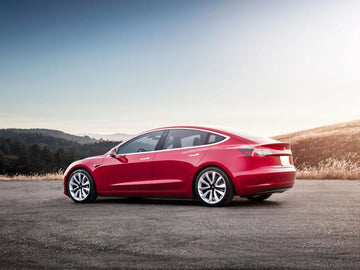Installing a Tesla Wall Charger, also known as the Wall Connector, is a significant step towardsThis guide will walk you through the process, highlighting key features and addressing common questions to ensure a smooth and safe installation.
How to Install A Tesla Wall Charger?
-
Convenience and Speed: The Tesla Wall Charger offers a convenient charging solution for homes and workplaces, with up to 44 miles of range added per hour at 11.5 kW / 48 amp output.
-
Safety and Compliance: It's essential to turn off power at the breaker and use personal protective equipment during installation. Double-check local electrical codes to ensure compliance and safety.
-
Wi-Fi Connectivity: The Wall Connector features Wi-Fi connectivity for over-the-air updates, remote diagnostics, and access controls, ensuring your charger is always up to date and functioning optimally.
-
Versatile Design: With a versatile indoor/outdoor design and a 24-foot cable length, the Wall Connector is suitable for various installation locations and offers flexibility in positioning your charger.
-
Cost-Effectiveness: Charging at home can be more cost-effective than using public charging stations, especially when taking advantage of off-peak electricity rates.
FAQ Section:
Q1: What tools do I need for the installation?
A: Essential tools include a drill, screwdriver set, voltage tester, multimeter, wire strippers, level, and conduit bender if needed. These tools help with mounting the bracket, securing connections, and ensuring the charger is mounted straight.
Q2: Should I hire a professional to install the Wall Charger?
A: While it's possible to install the Wall Charger yourself if you're comfortable with electrical work, hiring a licensed electrician is recommended for a professional and safe installation.
Q3: What are the electrical requirements for the Wall Charger?
A: The Wall Charger typically operates at 240 volts and requires a dedicated circuit breaker. Depending on the model, it may draw between 30-80 amps.
Q4: How do I ensure my home's electrical system can support the Wall Charger?
A: Check your home's electrical system to ensure it supports the required voltage and amperage. Consulting with a licensed electrician can provide confirmation and advice on any necessary upgrades.
Q5: What happens after the installation is complete?
A: After installation, turn the power back on at the breaker panel and test the charger to ensure it's functioning correctly. The charger's indicator light should turn on, signaling it's receiving electricity. Refer to Tesla's installation manual for specific light codes.
View Video
Call to Action
By understanding these features and addressing these common questions, you can ensure that your Tesla Wall Charger installation is a success, providing you with a reliable and convenient charging solution for your electric vehicle.



















































